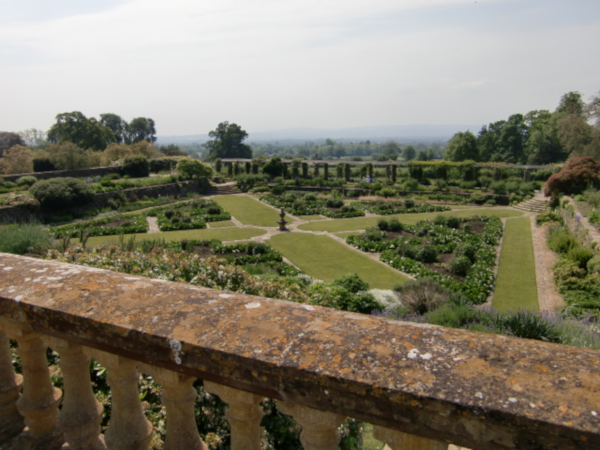Local History
This was a small village just north east of Taunton. Originally called ‘Cedene’, probably meaning a wooded valley, it adjoined the medieval Priorswood, which is now built over. Excavations have revealed early occupation of the area. The village now consists of the houses around the Church as well as at Upper Cheddon, Rowford, and in the latter part of the twentieth century two estates built at Maidenbrook, (Waterleaze and Summerleaze) set among agricultural land. Currently, Northwalls Grange and Nerrols Grange are being developed with up to 900 houses being constructed off Nerrols Drive.
The suffix of Fitzpaine was added to Cheddon when the land passed to a family of that name in 13th century. The ancient Church, at one end of the village street has a 13th century tower, interesting carved bench ends, a stone pulpit and some modern glass. It was much restored in 1861. There is a Bath & Wells Multi-Academy Primary School at Rowford with recent additions. In September 2019 a newly built Nerrols Primary School with 14 class rooms opened run by the Richard Huish Trust. Hestercombe House4 has beautiful gardens, the result of a partnership between Sir Edwin Lutyens and Gertrude Jekyll. They are open to the public together with the 18th century landscaped grounds behind the house with lakes, cascade, temples and walks designed by Coplestone Warre Bampfylde. The Warres lived here for centuries until it was bought in 1872 by the Portman family who made further alterations to the house and commissioned the gardens.
For leisure, there is an excellent Memorial Hall at Rowford, built in 2002 used for a wide variety of activities, including a popular Annual Flower Show, and ‘The Cheddoners’ produce an annual entertainment/pantomime.
The Bridgwater & Taunton Canal passes through the southern part of the parish providing excellent walking, cycling and fishing. The Quantocks (Area of Outstanding Natural Beauty) lies to the north west of the parish which is inspirational for many outdoor pursuits and recreational activities.
The Parish today is very different to that of 1,000 years ago! See below for a brief history. Today, the original village of just over 100 properties stands proudly amidst rich agricultural land. This was originally owned by the Crown but land and property were sold by the Crown in 2018. Over the past two decades, the parish has changed dramatically with extensive development having taken place. The southern-most area now hosts industrial buildings and the main Waste/Recycling Plant for Somerset West & Taunton Council (run by Viridor). Adjacent to this is the estate of Waterleaze/Tudor Park on Maidenbrook Farm land containing about 230 properties and on the opposite side of the Crown roundabout is the estate of Summerleaze with approximately 350 properties. Travelling north through the parish, the land is still farmed, and the village remains largely unspoilt from its origins, with Hestercombe Gardens majestically overlooking the Parish in the north. Crown land has been sold in 2018, and SW&T have purchased 30 acres for a Country Park. The character of the Parish remains unchanged in the village, but over a short period of time the population has changed with the greater number of residents now living in an urban setting.
The Name of the Village
(Upper) Cheddon. ‘Cedre or Opecedre’, appears in the Domesday Book 1086 as ‘The upper protecting hill’ from the Old English up-scead and dun.1 Cheddon Fitzpaine. The second part of the name is taken from Edmund Fitzpaine c.1084. The Domesday Book simply states the he was “Edumund, sone of Payne”.2
Cheddon Fitzpaine
Set in lush countryside immediately north-east from Taunton, this small village is progressively being encroached on by the county town, its name (‘Cedenon’ in 897) possibly meaning ‘wooded valley’. In Saxon times it formed part of the outfaring of Taunton Deane manor but after the Conquest was granted to the great Roger Arundel, a half share descending in 1198 to Robert Fitzpayn, whose family obtained the other half in 1224 and held the estate until 1393.
The manor was bought in the 16th century by Thomas More of Taunton Priory from whom it passed by marriage to the Methuens of Corsham, Wilts. The living passed with the manor until granted to William Clifton of Barrington in the 16th century, who family sold it to the Warres of nearby Hestercombe, several of whom served as vicars. The church of St Mary retains its 13th century tower with large gargoules, but the rest of the building was over-restored in 1861. William Otherie was prosecuted in 1623 for urinating in his pew during the sermon!
Maidenbrook Farm was mentioned in 1086 and Nerrols was formerly known as Northwalls, possibly the home of William de Northwolde in 1280. Excavations have recently revealed flint and pottery evidence in the south-west of the parish from the late Neolithic to early Bronze ages and small Romano-British settlement sites near Maidenbrook and Nerrols. There is also evidence that the medieval woodland of the priors of Taunton, hence the name Priorswood, straddled the old boundary with Taunton.3
1 Robinson, Stephen, Somerset Place Names, (1992)
2 Bush, Robin, Somerset -The Complete Guide, (1994)
3 Bush, Robin, Somerset -The Complete Guide (1994)
4 Pevsner, Nikolaus, The Buildings of South and West Somerset

